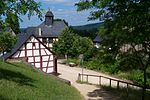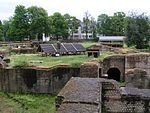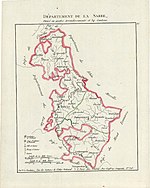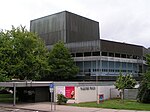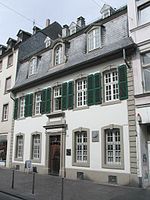Trier Air Base
Airports established in 1910Airports in Rhineland-PalatinateDefunct airports in GermanyTrierWorld War II airfields in Germany

Trier Air Base, also known as Trier Euren Airfield, is a former military airfield located in the southwest of Trier, a city in Rhineland-Palatinate, Germany. It was established in 1910. During World War I it was used by the Deutsche Luftstreitkräfte as both a Zeppelin and military airfield. Later, it was used by the Air Service, United States Army, Deutsche Luftwaffe, the United States Army Air Forces, and NATO forces until being closed in 1977, when the airfield was converted into an industrial park.
Excerpt from the Wikipedia article Trier Air Base (License: CC BY-SA 3.0, Authors, Images).Trier Air Base
Niederkircher Straße, Trier Euren (Euren)
Geographical coordinates (GPS) Address Nearby Places Show on map
Geographical coordinates (GPS)
| Latitude | Longitude |
|---|---|
| N 49.723888888889 ° | E 6.6027777777778 ° |
Address
Schloss Wachenheim
Niederkircher Straße 27
54294 Trier, Euren (Euren)
Rhineland-Palatinate, Germany
Open on Google Maps
